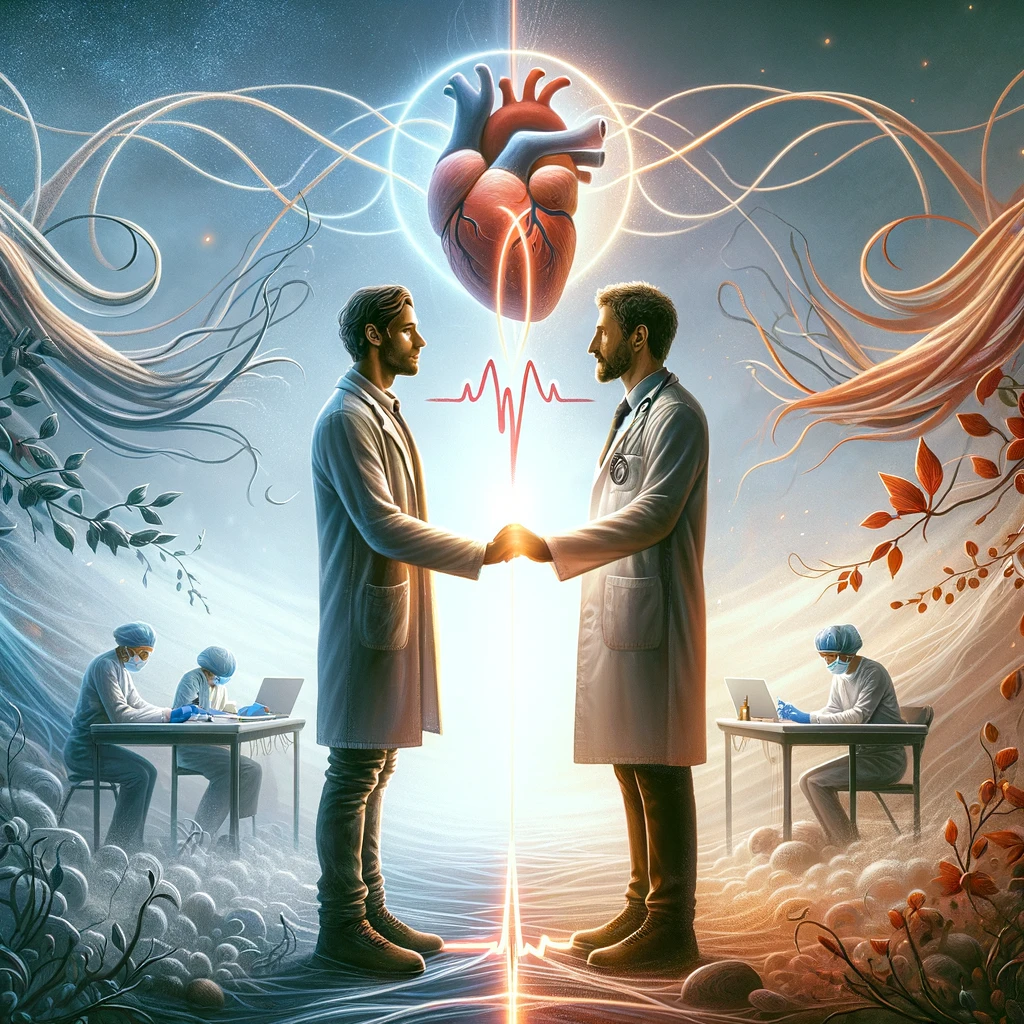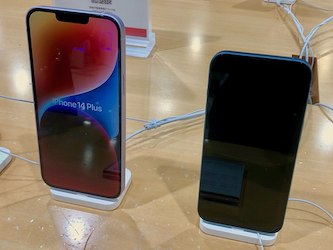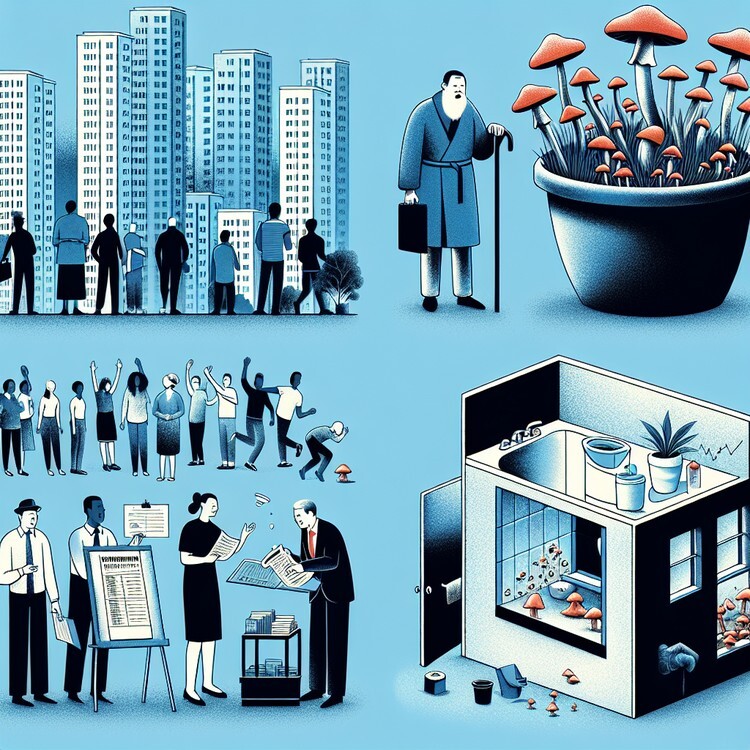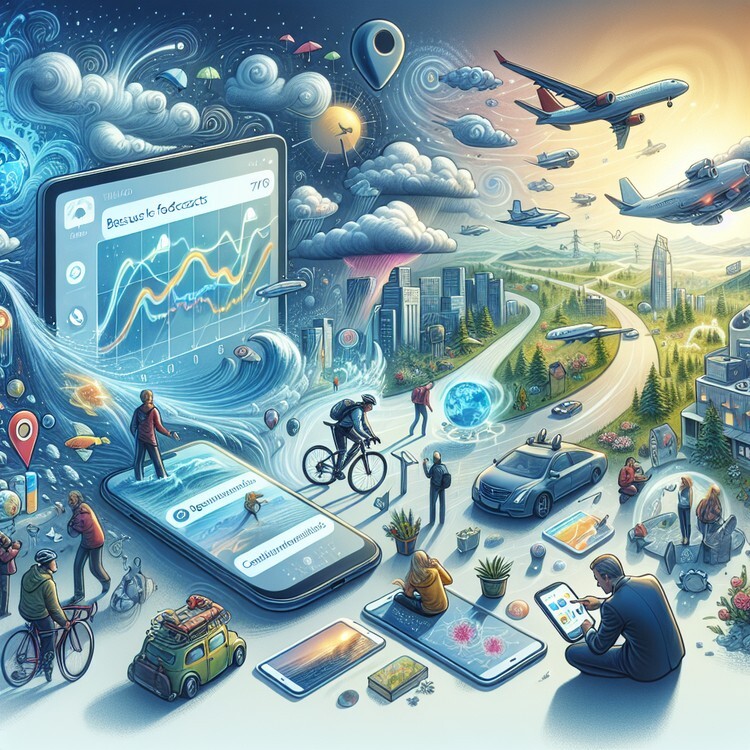In a heartwarming story, a German man named Marius Werner saved the life of a British doctor, Dr. Nick Embleton, through an anonymous stem-cell donation. Dr. Embleton, who was diagnosed with a rare type of blood cancer, needed a bone marrow transplant to survive. Unable to find a match in the UK, the search was expanded worldwide. After two years, BBC News and the charity Anthony Nolan helped the two men, who now consider themselves “blood brothers,” find each other for the first time.
Dr. Embleton, who has worked in a neonatal intensive care unit in Newcastle for over two decades, was devastated by his diagnosis. He was aware that he might die and even made a will. Breaking the news to his wife and children was particularly difficult for him. The only hope for his survival was a successful bone marrow transplant, which replaces damaged blood cells with healthy ones. However, finding a matching donor is a challenging task.
Both the donor and the patient must remain anonymous until the transplant is confirmed to have worked. After learning that the transplant was successful, Dr. Embleton expressed his desire to meet his donor. With the help of Anthony Nolan, Marius, who had been on the donor register since his late teens, was identified and agreed to meet Dr. Embleton in the UK. The emotional reunion took place at a cancer support center, where they hugged and expressed their overwhelming gratitude towards each other.
During their meeting, Marius revealed that the news of the transplant’s success brought him to tears. He also shared that he had previously struggled with mental health issues and had even attempted suicide. He believes that saving Dr. Embleton’s life gave him a sense of purpose and helped him find his way in life. The two men, now connected by the same blood, plan to remain in touch as “blood brothers.”
This inspiring story highlights the power of anonymous acts of kindness and the profound impact they can have on both the recipient and the giver. It also emphasizes the importance of organ and stem-cell donation in saving lives. Anyone affected by similar issues can seek support from BBC Action Line.
Original news source: The strangers who saved each other’s lives (BBC)
🎧 Listen:
Slow
Normal
Fast
📖 Vocabulary:
| 1 | heartwarming | Causing feelings of happiness and emotional warmth |
| 2 | anonymous | Not identified by name; unknown |
| 3 | diagnosed | Identified the nature of an illness or other problem by examination of the symptoms |
| 4 | rare | Not common; unusual |
| 5 | expanded | Made larger or more extensive |
| 6 | devastating | Causing great sadness or distress |
| 7 | neonatal | Relating to newborn children |
| 8 | challenging | Difficult to do or achieve; demanding |
| 9 | confirmed | Established as true or genuine |
| 10 | gratitude | A feeling of thankfulness and appreciation |
| 11 | overwhelmed | Swamped with emotion to the point of being unable to react |
| 12 | emotional | Relating to strong feelings of sadness or joy |
| 13 | purpose | The reason for which something is done or created |
| 14 | profound | Having a deep or significant impact |
| 15 | donation | The act of giving something to help a person, group, or organization |
Group or Classroom Activities
Warm-up Activities:
– News Summary
Instructions: Divide the class into pairs or small groups. Give each group a few minutes to read the article silently. Then, ask them to work together to create a concise summary of the article, highlighting the main points and key details. Afterward, have each group share their summary with the class.
– Opinion Poll
Instructions: Write the following question on the board: “Do you think anonymous acts of kindness have a profound impact on both the recipient and the giver?” Ask students to think about their opinion and then discuss it in pairs or small groups. Afterward, conduct a class-wide poll by having students raise their hands to indicate their agreement or disagreement with the statement. Encourage students to explain their reasoning.
– Pros and Cons
Instructions: Divide the class into two groups. Assign one group to discuss the pros of organ and stem-cell donation, while the other group discusses the cons. Give each group a few minutes to brainstorm their arguments. Then, have them take turns presenting their points to the class. Encourage respectful discussion and allow for rebuttals or counterarguments.
– Sketch It
Instructions: Give each student a piece of paper and a pen or pencil. Instruct them to sketch a scene that represents the emotional reunion between Marius and Dr. Embleton. Encourage students to focus on capturing the emotions and expressions of the characters in their drawings. Afterward, have students share and explain their sketches with a partner or the whole class.
– Future Predictions
Instructions: Ask students to imagine what could happen next in the story. Will Marius and Dr. Embleton continue to stay in touch as “blood brothers”? Will they collaborate on a project related to organ and stem-cell donation? Will their story inspire others to become donors? Have students write down their predictions individually, and then discuss their ideas in small groups or as a class. Encourage students to support their predictions with evidence from the article.
🤔 Comprehension Questions:
1. Why did Dr. Embleton need a bone marrow transplant?
2. How long did it take for the two men to find each other?
3. What was Dr. Embleton’s profession?
4. Why did Marius Werner feel a sense of purpose after saving Dr. Embleton’s life?
5. What is the significance of both the donor and the patient remaining anonymous until the transplant is confirmed?
6. Where did the emotional reunion between Marius and Dr. Embleton take place?
7. What did Marius reveal about his own struggles during the meeting?
8. What is the main message of this story?
Go to answers ⇩
🎧✍️ Listen and Fill in the Gaps:
In a heartwarming story, a German man named Marius Werner saved the life of a (1)______ doctor, Dr. Nick Embleton, through an anonymous stem-cell donation. Dr. Embleton, who was diagnosed with a rare type of blood cancer, needed a bone (2)______ transplant to survive. Unable to find a match in the UK, the search was expanded worldwide. After two years, BBC News and the charity Anthony Nolan helped the two men, who now consider themselves “blood brothers,” find each other for the (3)______ time.
Dr. Embleton, who has worked in a (4)______ intensive care unit in Newcastle for over two decades, was devastated by his diagnosis. He was aware that he might die and even made a will. Breaking the news to his wife and (5)______ was particularly difficult for him. The only hope for his survival was a successful bone marrow transplant, which replaces damaged blood cells with healthy ones. However, finding a matching donor is a challenging task.
Both the donor and the patient must (6)______ anonymous until the transplant is (7)______ to have worked. After (8)______ that the transplant was (9)______ful, Dr. Embleton expressed his desire to meet his donor. With the help of (10)______ Nolan, Marius, who had been on the donor register since his late teens, was identified and agreed to meet Dr. Embleton in the UK. The (11)______ reunion took place at a (12)______ support center, where they hugged and expressed their overwhelming gratitude towards each other.
During their meeting, Marius revealed that the news of the transplant’s success brought him to tears. He also shared that he had previously struggled with mental health issues and had even (13)______ suicide. He believes that (14)______ Dr. Embleton’s life gave him a sense of purpose and (15)______ him find his way in life. The two men, now connected by the same blood, plan to remain in touch as “blood brothers.”
This inspiring story highlights the power of anonymous acts of kindness and the profound impact they can have on both the recipient and the giver. It also emphasizes the importance of organ and stem-cell donation in saving lives. Anyone affected by (16)______ issues can seek support from BBC Action Line.
Go to answers ⇩
💬 Discussion Questions:
Students can ask a partner these questions, or discuss them as a group.
1. What is a bone marrow transplant and why is it important for someone with blood cancer?
2. How would you feel if you were diagnosed with a life-threatening illness like blood cancer?
3. Do you think it’s important for organ and stem-cell donation to be anonymous? Why or why not?
4. Have you ever known someone who needed a transplant or donation to survive? How did it affect their life?
5. What is the significance of the term “blood brothers” in this story?
6. How do you think Marius felt when he found out that he was a match for Dr. Embleton?
7. Do you think it’s important for people to be on the donor register? Why or why not?
8. Have you ever done an anonymous act of kindness? How did it make you feel?
9. How do you think Dr. Embleton’s life will change now that he has received the transplant?
10. What do you think it means to have a sense of purpose in life? How can acts of kindness contribute to that?
11. How do you think Marius felt when he met Dr. Embleton for the first time?
12. Do you think it’s important for people to share their stories of overcoming challenges and struggles? Why or why not?
13. How do you think the experience of being a bone marrow donor has changed Marius’s perspective on life?
14. What other ways can people show kindness and support to those who are going through difficult times?
15. Do you think this story will inspire more people to become organ and stem-cell donors? Why or why not?
Individual Activities
📖💭 Vocabulary Meanings:
Match each word to its meaning.
Words:
1. heartwarming
2. anonymous
3. diagnosed
4. rare
5. expanded
6. devastating
7. neonatal
8. challenging
9. confirmed
10. gratitude
11. overwhelmed
12. emotional
13. purpose
14. profound
15. donation
Meanings:
(A) The act of giving something to help a person, group, or organization
(B) Relating to strong feelings of sadness or joy
(C) Swamped with emotion to the point of being unable to react
(D) A feeling of thankfulness and appreciation
(E) Relating to newborn children
(F) Not identified by name; unknown
(G) Causing great sadness or distress
(H) Having a deep or significant impact
(I) Established as true or genuine
(J) Difficult to do or achieve; demanding
(K) Causing feelings of happiness and emotional warmth
(L) Made larger or more extensive
(M) Not common; unusual
(N) Identified the nature of an illness or other problem by examination of the symptoms
(O) The reason for which something is done or created
Go to answers ⇩
🔡 Multiple Choice Questions:
1. What did Marius Werner donate to Dr. Nick Embleton?
(a) Blood
(b) Stem cells
(c) Organs
(d) Bone marrow
2. Why did Dr. Embleton need a bone marrow transplant?
(a) He was diagnosed with a rare type of blood cancer
(b) He had a heart condition
(c) He had a lung infection
(d) He had a broken bone
3. How long did it take to find a matching donor for Dr. Embleton?
(a) Six months
(b) One week
(c) Two years
(d) Ten years
4. Why did the donor and patient have to remain anonymous?
(a) To protect their privacy
(b) To avoid any emotional attachment
(c) To prevent any legal issues
(d) Until the transplant was confirmed to have worked
5. Where did the emotional reunion between Marius and Dr. Embleton take place?
(a) At a hospital
(b) At Marius’ home
(c) At a blood donation center
(d) At a cancer support center
6. What did Marius reveal about his past struggles?
(a) He had financial difficulties
(b) He had a difficult childhood
(c) He had mental health issues and attempted suicide
(d) He had a history of substance abuse
7. How did Marius feel when he learned that the transplant was successful?
(a) He felt indifferent
(b) He cried tears of joy
(c) He was disappointed
(d) He was angry
8. What does this story emphasize the importance of?
(a) Organ and stem-cell donation
(b) Blood donation
(c) Cancer research
(d) Mental health awareness
Go to answers ⇩
🕵️ True or False Questions:
1. The search for a matching donor for Dr. Embleton was expanded worldwide after not finding a match in the UK.
2. Marius had dealt with mental health challenges and contemplated suicide before rescuing Dr. Embleton’s life.
3. After two years, BBC News and the charity Anthony Nolan helped Marius and Dr. Embleton find each other for the first time.
4. Dr. Embleton had served in a neonatal intensive care unit in Newcastle for over two years before his diagnosis.
5. Both the recipient and the patient must stay unidentified until the transplant is verified to have been successful.
6. The two men promise to stay in contact and view themselves as close friends after their heartfelt reunion.
7. A German man named Marius Werner saved the life of a British doctor, Dr. Nick Embleton, through an anonymous stem-cell donation.
8. Dr. Embleton was diagnosed with a rare type of blood cancer and needed a bone marrow transplant to survive.
Go to answers ⇩
📝 Write a Summary:
Write a summary of this news article in two sentences.
Writing Questions:
Answer the following questions. Write as much as you can for each answer.
1. How did Marius Werner save the life of Dr. Nick Embleton?
2. Why was it difficult for Dr. Embleton to break the news of his diagnosis to his family?
3. Why must the donor and the patient remain anonymous until the transplant is confirmed?
4. How did Marius react to the news of the transplant’s success?
5. What is the main message of this inspiring story?
✅ Answers
🤔✅ Comprehension Question Answers:
1. Dr. Embleton needed a bone marrow transplant because he was diagnosed with a rare type of blood cancer.
2. It took two years for the two men to find each other.
3. Dr. Embleton’s profession was a doctor, specifically working in a neonatal intensive care unit.
4. Marius Werner felt a sense of purpose after saving Dr. Embleton’s life because it helped him find his way in life and gave him a sense of meaning.
5. The significance of both the donor and the patient remaining anonymous until the transplant is confirmed is to protect their privacy and ensure the success of the transplant before any personal connections are made.
6. The emotional reunion between Marius and Dr. Embleton took place at a cancer support center.
7. During the meeting, Marius revealed that he had previously struggled with mental health issues and had even attempted suicide.
8. The main message of this story is the power of anonymous acts of kindness and the profound impact they can have on both the recipient and the giver, as well as the importance of organ and stem-cell donation in saving lives.
Go back to questions ⇧
🎧✍️✅ Listen and Fill in the Gaps Answers:
(1) British
(2) marrow
(3) first
(4) neonatal
(5) children
(6) remain
(7) confirmed
(8) learning
(9) success
(10) Anthony
(11) emotional
(12) cancer
(13) attempted
(14) saving
(15) helped
(16) similar
Go back to questions ⇧
📖💭✅ Vocabulary Meanings Answers:
1. heartwarming
Answer: (K) Causing feelings of happiness and emotional warmth
2. anonymous
Answer: (F) Not identified by name; unknown
3. diagnosed
Answer: (N) Identified the nature of an illness or other problem by examination of the symptoms
4. rare
Answer: (M) Not common; unusual
5. expanded
Answer: (L) Made larger or more extensive
6. devastating
Answer: (G) Causing great sadness or distress
7. neonatal
Answer: (E) Relating to newborn children
8. challenging
Answer: (J) Difficult to do or achieve; demanding
9. confirmed
Answer: (I) Established as true or genuine
10. gratitude
Answer: (D) A feeling of thankfulness and appreciation
11. overwhelmed
Answer: (C) Swamped with emotion to the point of being unable to react
12. emotional
Answer: (B) Relating to strong feelings of sadness or joy
13. purpose
Answer: (O) The reason for which something is done or created
14. profound
Answer: (H) Having a deep or significant impact
15. donation
Answer: (A) The act of giving something to help a person, group, or organization
Go back to questions ⇧
🔡✅ Multiple Choice Answers:
1. What did Marius Werner donate to Dr. Nick Embleton?
Answer: (b) Stem cells
2. Why did Dr. Embleton need a bone marrow transplant?
Answer: (a) He was diagnosed with a rare type of blood cancer
3. How long did it take to find a matching donor for Dr. Embleton?
Answer: (c) Two years
4. Why did the donor and patient have to remain anonymous?
Answer: (d) Until the transplant was confirmed to have worked
5. Where did the emotional reunion between Marius and Dr. Embleton take place?
Answer: (d) At a cancer support center
6. What did Marius reveal about his past struggles?
Answer: (c) He had mental health issues and attempted suicide
7. How did Marius feel when he learned that the transplant was successful?
Answer: (b) He cried tears of joy
8. What does this story emphasize the importance of?
Answer: (a) Organ and stem-cell donation
Go back to questions ⇧
🕵️✅ True or False Answers:
1. The search for a matching donor for Dr. Embleton was expanded worldwide after not finding a match in the UK. (Answer: True)
2. Marius had dealt with mental health challenges and contemplated suicide before rescuing Dr. Embleton’s life. (Answer: False)
3. After two years, BBC News and the charity Anthony Nolan helped Marius and Dr. Embleton find each other for the first time. (Answer: True)
4. Dr. Embleton had served in a neonatal intensive care unit in Newcastle for over two years before his diagnosis. (Answer: False)
5. Both the recipient and the patient must stay unidentified until the transplant is verified to have been successful. (Answer: False)
6. The two men promise to stay in contact and view themselves as close friends after their heartfelt reunion. (Answer: False)
7. A German man named Marius Werner saved the life of a British doctor, Dr. Nick Embleton, through an anonymous stem-cell donation. (Answer: True)
8. Dr. Embleton was diagnosed with a rare type of blood cancer and needed a bone marrow transplant to survive. (Answer: True)
Go back to questions ⇧












